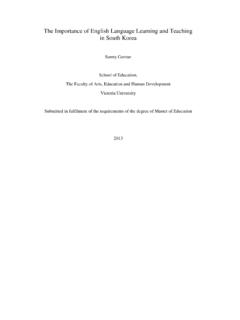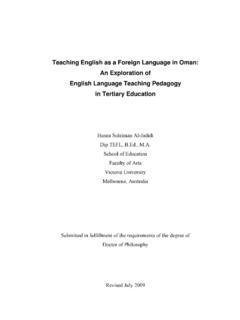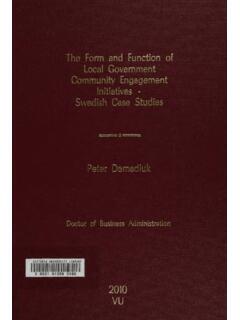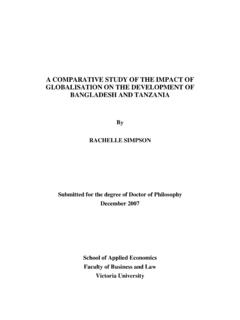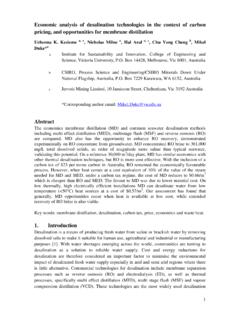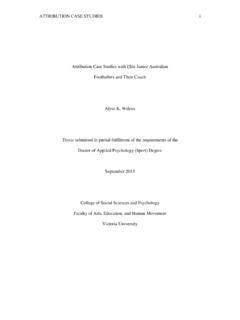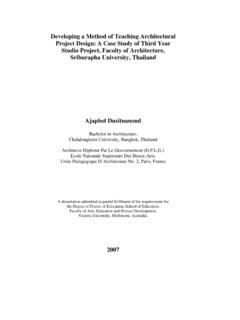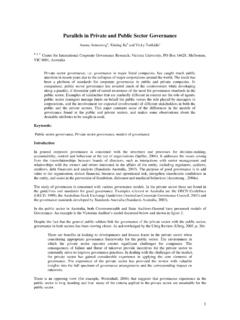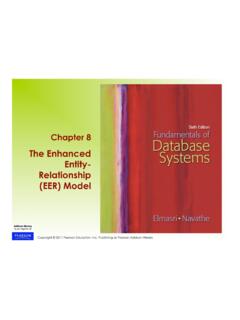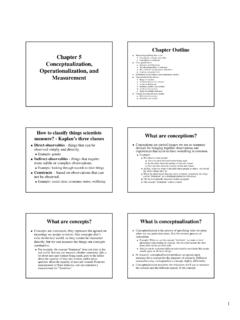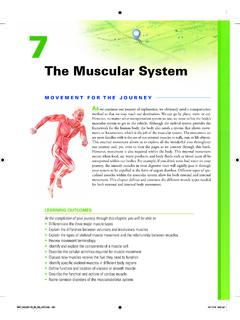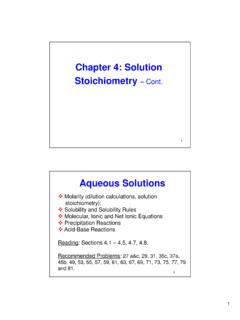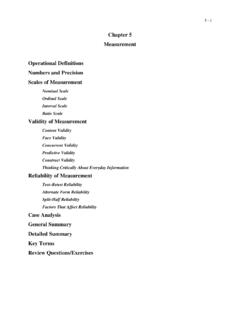Transcription of Chapter 5 CONCLUSIONS AND RECOMMENDATIONS 5.1 ... - …
1 177 Chapter 5 CONCLUSIONS AND RECOMMENDATIONS INTRODUCTION With rapid expansion of the transnational education market, more and more universities join the ranks of transnational education providers, or expand their transnational education offerings. This study has developed a conceptual model for transnational computing education programs using student perceptions as a framework. This model allows academics involved in teaching, managing, and developing such programs to gain insights into program effectiveness as perceived by transnational students. This Chapter begins with a summary of my thesis in Section , with each Chapter summarised. Section addresses the major findings of my study, followed by Section that describes three major contributions of my study.
2 The constraints and limitations of my study are summarised in Section , whereas Section outlines RECOMMENDATIONS for future research related to my study. OVERVIEW OF THE THESIS The first Chapter of this thesis provides a general background to the evolution of distance and transnational education, in addition to the aims and significance of this study. The overview of distance and transnational education (Section ) focuses on tertiary education, its rapid expansion, and the need for educational providers to offer good quality programs to attract students. I highlight the need for universities to acknowledge, and respond to, student needs, even more so since the competition for students in the transnational education arena has become more intense.
3 I also underline the need for investigation of quality and effectiveness of transnational programs in addition to their technological aspects. I present a brief introduction to the effectiveness of distance/transnational education and identify the research problem and hypotheses (Section ), followed by an outline of 178methods and significance of this study (Sections & ). The aims of my study are: (1) to investigate attributes that may determine the effectiveness of distance education programs in general, and transnational computing programs in particular; (2) to use these attributes to develop a conceptual model for effective transnational programs; and, (3) to apply the model to selected transnational computing programs for validation.
4 Finally, I point out that this study is significant in three ways. First, in terms of transnational education, this study expands on current and past transnational education research. Second, in terms of contributing to knowledge regarding effectiveness of transnational education programs, it incorporates student perspective into the program effectiveness framework. Third, by determining specific attributes of effective transnational programs, it provides a model to assist in making informed decisions in the design, development, and review of transnational programs. Chapter 2 provides a review of literature in five areas related to the study: (1) the evolution of distance education; (2) the impact of technology on distance education; (3) the transnational education model; (4) requirements of computing education at a distance; and, (5) distance education effectiveness.
5 The major section concerning the evolution of distance education (Section ) discusses the history and transformation of distance education to create a framework for the sequence of events that have contributed to the distance education movements and shaped modern post-secondary distance education programs. Section explores the fundamental role that technology has played in the evolution and growth of distance education. Section focuses on one type of distance education, which is the subject of this research study transnational education. It discusses the definition of transnational education and its subtype: the Australian transnational education. The typology of transnational education is also reviewed, as are factors determining demand and supply, and characteristics of typical programs.
6 The section concludes with a discussion on the role that face-to-face interaction plays in transnational programs. The next section (Section ) highlights the particular demands of teaching computing programs in a transnational setting: firstly, the need to update study material in a rapidly changing discipline; secondly, the 179requirement to teach subjects involving theory, higher analytical reasoning, and problem solving; and finally, the demand to accommodate hardware and software needs of the students. Section links distance education with student satisfaction and effectiveness of distance education programs, especially in terms of tertiary education. Finally, as this research study involved investigation of critical success factors in transnational education programs, Section reviews in detail the factors that define effectiveness of those programs; it examines attributes of distance education students, instructors, technology, program design, and organisational support that contribute to program effectiveness.
7 Chapter 3 describes the approach that I used to develop and validate the multidimensional model for transnational education programs; it describes the research design, the population and sample, instrumentation, data collection, and data analyses that were used in the study. Section outlines methods used in the development and validation of the multidimensional model. The development of the model was a two-step process. Firstly, success attributes of distance education programs, with emphasis on transnational programs, were identified. Secondly, these attributes were grouped into broader categories dimensions; this collection of dimensions formed a model of effective transnational programs. Two methods of data collection (a survey and group interviews), and multiple data sources (three transnational computing programs) were used to validate the model; Section provides a description of those data sources.
8 Sections & describe the means by which the data was collected, as well as the ethical considerations associated with data collection. Finally, Section describes the methods used for the analysis of data. Chapter 4 presents the conclusion to the development and validation of the multidimensional model. First, Section details the dimensions of the proposed model including: Student, Instructor and learning environment, Instructor Technology and support, Curriculum and instruction design, Interaction, Evaluation and assessment, Technology, and Program management and organisational support. Second, Section describes the three transnational 180computing education programs used for validation of the model; the programs are offered by Australian universities to students in Hong Kong.
9 Third, Sections & present the results of model validation through the survey and group interviews with students. Finally, following validation, the refined version of the model is presented in Section ; the refinement involved the introduction of a new dimension, Pre-enrolment considerations, removal of least important attributes, and ordering of attributes within dimensions in terms of importance. Chapter 4 also provides responses to the research hypotheses tested in this study. MAJOR FINDINGS This research study had three goals. First, I set out to identify from literature success attributes of distance education programs. Second, based on the identified attributes, I developed a model for effective distance education programs (with emphasis on transnational programs).
10 Finally, I validated the model against three transnational programs, and refined the original model. The following hypotheses guided the analysis of data: 1. Critical success attributes (of effective distance education programs) in each dimension will be evident in each targeted transnational program. 2. Some attributes will be regarded as more important to the success of transnational programs than others. 3. Additional attributes, not included in the current dimensional model, will be identified as critical to the effectiveness of transnational programs. 4. In each of the targeted programs, attributes regarded as important with respect to University instructor, will be also regarded as important with respect to local instructor. 5. For each of the targeted programs, there will be no significant difference in the level of student satisfaction with the University instructor and the local instructor.
